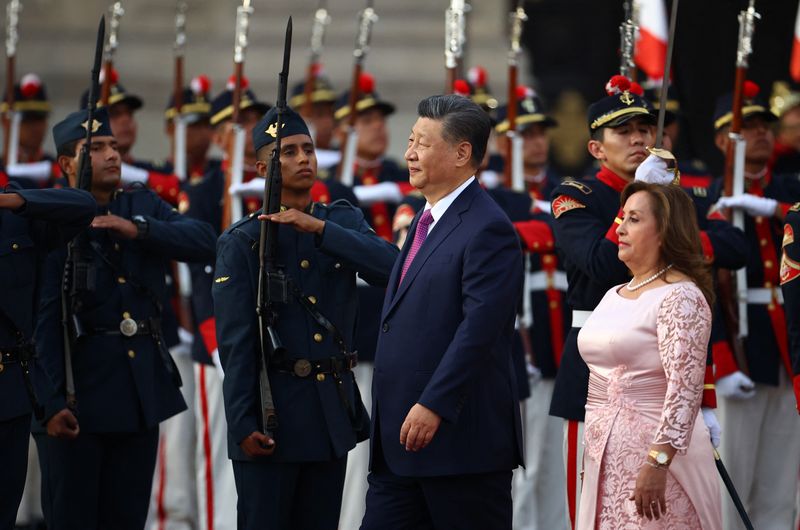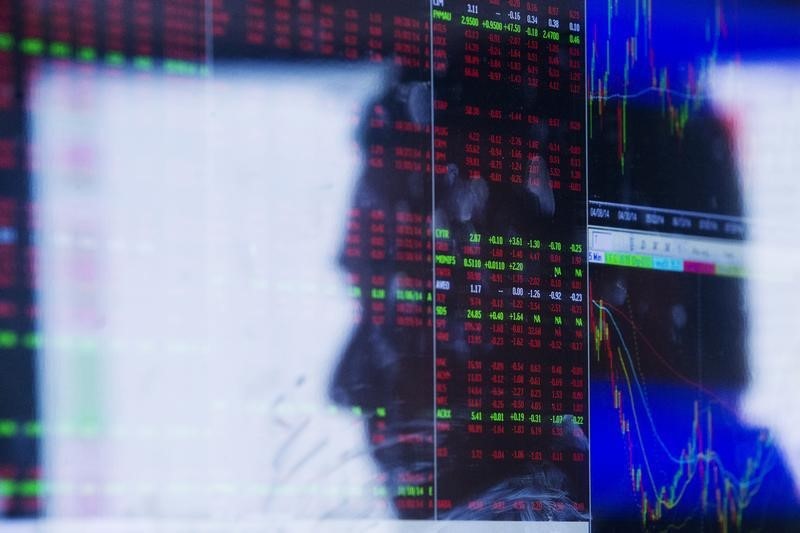By Eduardo Baptista, Marco Aquino, Lucinda Elliott
LIMA (Reuters) -Chinese President Xi Jinping launched a week-long diplomatic blitz in South America on Thursday by inaugurating a massive deep-water port in Peru, a $1.3 billion investment by Beijing as it seeks to boost trade and influence expand the continent.
With Chinese demand for agricultural products and metals from Latin America growing, Xi will attend the Asia-Pacific Economic Cooperation summit in Lima and next week to the Group of 20 summit in Rio de Janeiro, where he will also make a state visit bring to China. Brazil.
Xi and Peruvian President Dina Boluarte participated by video link on Thursday in the opening of the port of Chancay, about 80 kilometers north of Lima on the Pacific Ocean, signing a deal to expand an existing free trade agreement.
Xi said Chancay, a deepwater port with 15 berths, marked the successful start of a “21st century maritime Silk Road” and was part of China’s Belt and Road Initiative, the modern revival of the ancient Silk Road trade route.
“China is willing to work with the Peruvian side to take the Chancay project as a starting point to forge a new maritime land corridor between China and Latin America and connect the Great Inca Trail,” Xi said, referring to a 15th century mountain network. that joined the Inca Empire.
In an opinion article in state-run newspaper El Peruano, Xi said the Chancay project would generate $4.5 billion in annual revenue, create more than 8,000 direct jobs and reduce logistics costs of the Peru-China route by 20%.
The Chinese-controlled megaport was built by Cosco Shipping Ports and received US$1.3 billion in Chinese investment for its first phase. China is expected to spend billions more as Beijing and Lima work to position the country as a major shipping hub between Asia and South America.
The first ship would leave Chancay next week and carry Peruvian fruit to China, said Mario Ocharan, Peruvian director of the Chancay Chamber of Commerce.
China’s main motivation for developing the megaport, according to Ocharan, was access to neighboring Brazil, where a new railway line is planned to transport Brazilian exports such as soybeans and iron ore to the port.
According to Mario de las Casas, corporate affairs manager at Cosco Shipping Chancay Peru, the railway project is estimated to cost $3.5 billion.
Building that connection is “critical” to improving soybean transportation, as Brazil is the largest seller of soybeans to China, he said.
GEOPOLITICAL AND ECONOMIC HEADWINDS
The port’s inauguration comes as Beijing seeks to further capitalize on resource-rich Latin America, amid trade tensions with Europe and concerns about future US tariffs on Chinese exports from the incoming Trump administration.
Hundreds of Chinese businessmen have accompanied Xi on the trip, including heads of companies that have invested heavily in Peru, such as Chinalco, owner of the Toromocho mine.
Robert Evan Ellis, Latin America research professor at the US Army War College, said Chancay will make shipping between Latin America and China more efficient.
Because the port can handle the largest ships, it will reduce the need for shippers to consolidate freight containers at intermediate points, reducing costs and handling times.
“Chancay illustrates how China is pursuing secure access to raw materials and markets and how it is increasingly competing to control global added value,” said Ellis.
The large Chinese investment in Chancay has set off alarm bells in Washington. Gen. Laura Richardson, former head of the U.S. Southern Command, warned earlier this month that Chancay could be used by the Chinese navy and for intelligence gathering.

U.S. concerns about Chancay reflect a broader, decades-long shift in a region that Washington long saw as its backyard. China has overtaken the United States as the largest trading partner of countries such as Peru.
The Chinese state-backed Global Times wrote in an editorial on Monday that the port was “by no means an instrument of geopolitical competition,” and called US accusations of the port’s potential military use “slanderous.”


